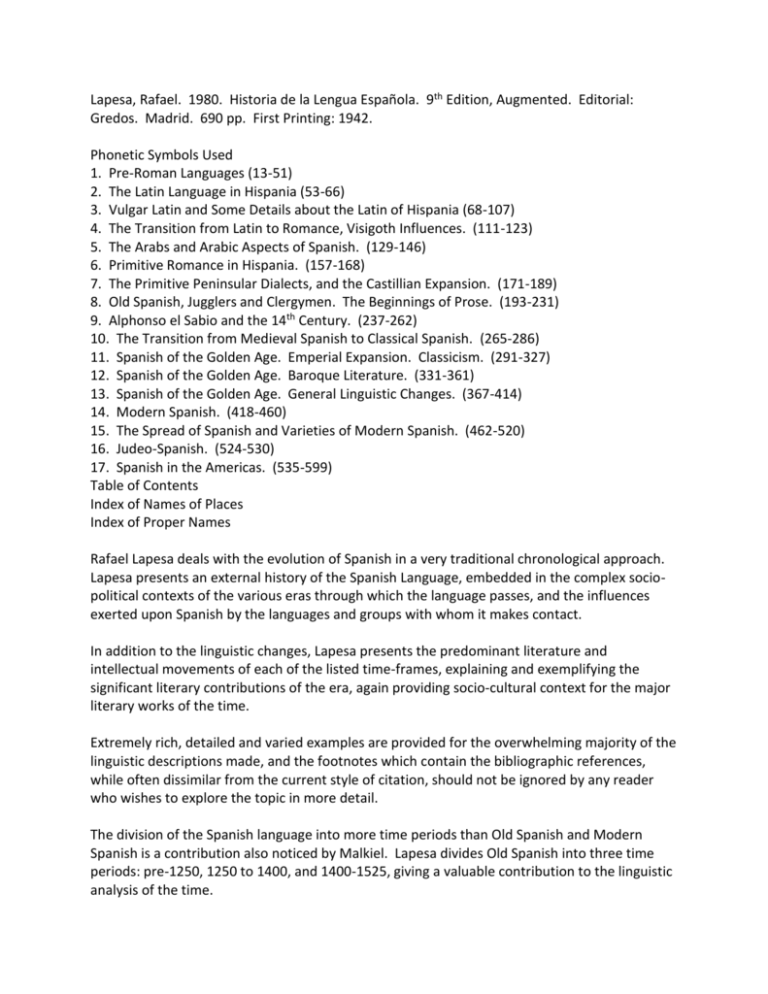Lapesa, Rafael. 1980. Historia de la Lengua Española. 9th Edition
advertisement

Lapesa, Rafael. 1980. Historia de la Lengua Española. 9th Edition, Augmented. Editorial: Gredos. Madrid. 690 pp. First Printing: 1942. Phonetic Symbols Used 1. Pre-Roman Languages (13-51) 2. The Latin Language in Hispania (53-66) 3. Vulgar Latin and Some Details about the Latin of Hispania (68-107) 4. The Transition from Latin to Romance, Visigoth Influences. (111-123) 5. The Arabs and Arabic Aspects of Spanish. (129-146) 6. Primitive Romance in Hispania. (157-168) 7. The Primitive Peninsular Dialects, and the Castillian Expansion. (171-189) 8. Old Spanish, Jugglers and Clergymen. The Beginnings of Prose. (193-231) 9. Alphonso el Sabio and the 14th Century. (237-262) 10. The Transition from Medieval Spanish to Classical Spanish. (265-286) 11. Spanish of the Golden Age. Emperial Expansion. Classicism. (291-327) 12. Spanish of the Golden Age. Baroque Literature. (331-361) 13. Spanish of the Golden Age. General Linguistic Changes. (367-414) 14. Modern Spanish. (418-460) 15. The Spread of Spanish and Varieties of Modern Spanish. (462-520) 16. Judeo-Spanish. (524-530) 17. Spanish in the Americas. (535-599) Table of Contents Index of Names of Places Index of Proper Names Rafael Lapesa deals with the evolution of Spanish in a very traditional chronological approach. Lapesa presents an external history of the Spanish Language, embedded in the complex sociopolitical contexts of the various eras through which the language passes, and the influences exerted upon Spanish by the languages and groups with whom it makes contact. In addition to the linguistic changes, Lapesa presents the predominant literature and intellectual movements of each of the listed time-frames, explaining and exemplifying the significant literary contributions of the era, again providing socio-cultural context for the major literary works of the time. Extremely rich, detailed and varied examples are provided for the overwhelming majority of the linguistic descriptions made, and the footnotes which contain the bibliographic references, while often dissimilar from the current style of citation, should not be ignored by any reader who wishes to explore the topic in more detail. The division of the Spanish language into more time periods than Old Spanish and Modern Spanish is a contribution also noticed by Malkiel. Lapesa divides Old Spanish into three time periods: pre-1250, 1250 to 1400, and 1400-1525, giving a valuable contribution to the linguistic analysis of the time.








